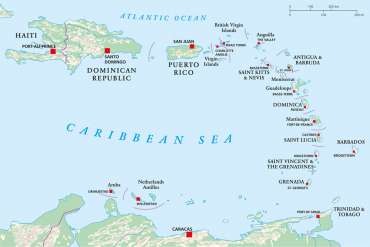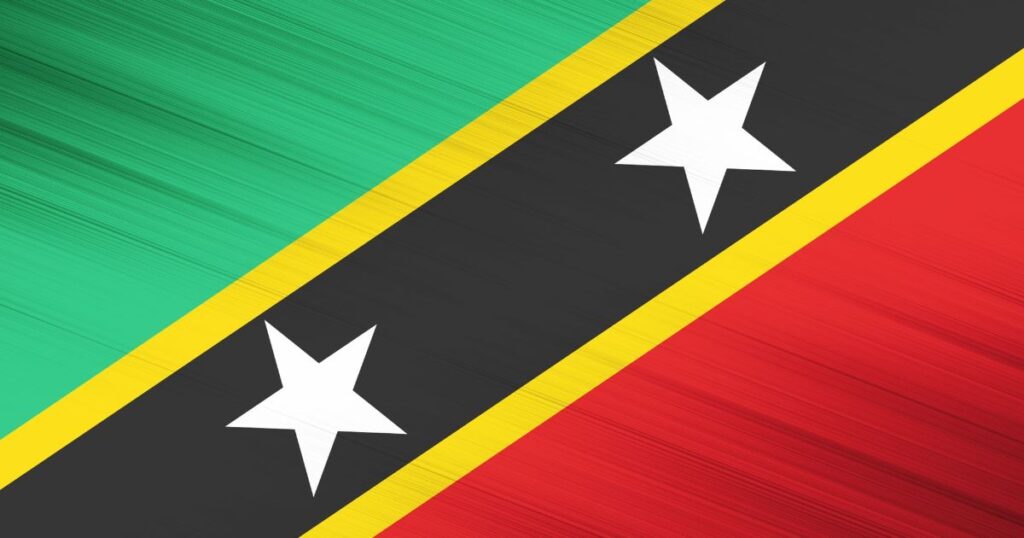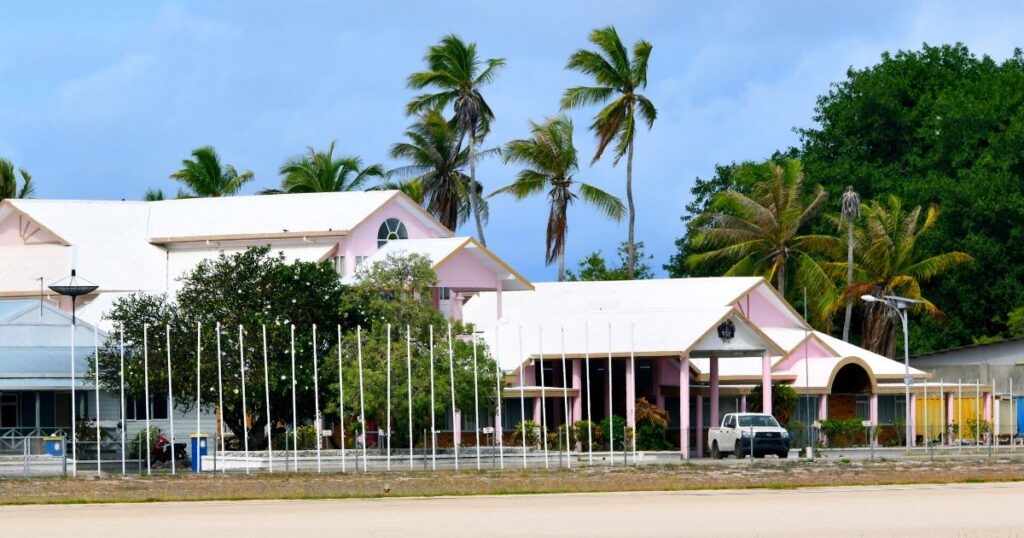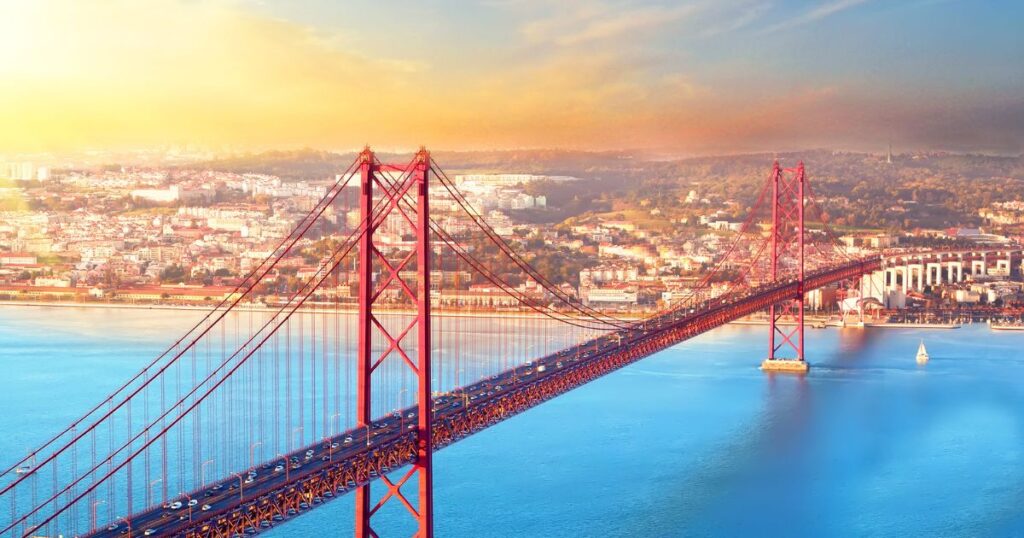Rich Caribbean countries have been a magnet attracting HNWI and millionaires., Cayman , US Virgin islands, and British virgin islands are among the top 3 richest and wealthiest islands in the Caribbean for 2023, according to the GDP per capita data from Worldbank.
GDP per Capita
GDP per capita is often considered a good indicator of the standard of living of a given country, as it reflects the average wealth of each person residing in a country. It is therefore the standard method used to compare how poor or wealthy countries are in relation to each other.
These are the richest caribbean countries in terms of GDP per capita income
1.Cayman Islands
Cayman islands is a british overseas territory, considered one of the biggest offshore financial haven in the world for international businesses and many wealthy individuals. The islands have a population of 64,000 and second richest british territory in terms of per capita with a mix of 100 nationalities and culture. The majority of the population resides on Grand Cayman, followed by Cayman Brac and Little Cayman. Tourists visit renowned its beach resorts and varied scuba diving and snorkelling sites.
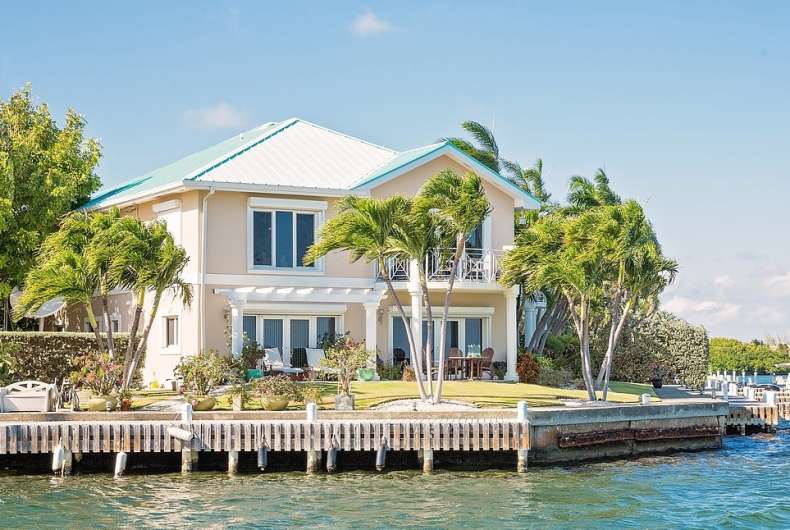
Cayman prints its own currency, the Cayman Islands dollar(KYD), which is pegged to the US dollar US$1.227 to 1 KYD. No income tax, capital gains tax, or corporation tax. Cayman islands is also jurisdiction of most offshore companies incorporated. Foreign policy is controlled by the United Kingdom, as the islands remain an overseas territory of the United Kingdom.
2. US Virgin Islands (USVI)
US Virgin Islands officially the Virgin Islands of the United States, is a group of islands in the Caribbean off 40 miles of Puerto Rico isa an unincorporated and organized territory of the United States with a population of 104,000. The U.S. Virgin Islands consists of the main islands of Saint Croix, Saint John, and Saint Thomas, and many other surrounding minor islands. The U.S. Virgin Islands are known for their white sand beaches, Approximately 2.5 million tourists per year visit USVI, most arriving on cruise ships.
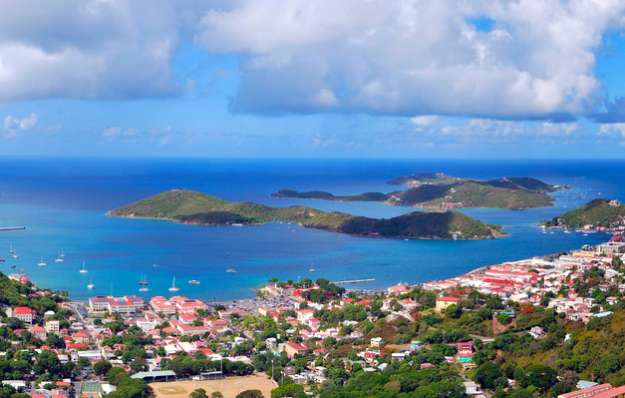
Tourism, trade, and other service-oriented industries are the primary economic activities, accounting for nearly 60% of the GDP. Virgin Islands residents are also U.S. citizens but cannot cast electoral votes for the president of the U.S. but they can participate in the presidential nominating processes (caucuses).
3. British Virgin Islands (BVI)
The British Virgin Islands (BVI), or “Virgin Islands”, are a British Overseas Territory in the Caribbean, to the east of Puerto Rico. British Virgin Islands (BVI) are made up of 4 larger islands; Tortola, Virgin Gorda, Jost Van Dyke and Anegada, and 32 smaller islands. The official name of the territory is still simply the “Virgin Islands”, but the prefix “British” is often used. The currency is US dollar.
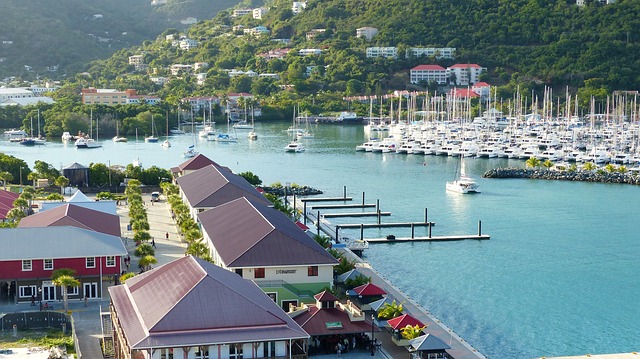
BVI has a population of 30,000 and uses US dollar as national currency. Tourism accounts for approximately 45% of national income. The islands are a popular destination for US citizens. Financial services account for over half of the income of the territory. The British Virgin Islands is a significant global player in the offshore financial services industry. British Virgin Islanders are British Overseas Territories citizens and since 2002 are British citizens as well. Parts of the islands were damaged in September 2017 by Hurricane Irma. The British Virgin Islands holds Associate Member status in CARICOM.
4. St.Maarten (Dutch)
St Martin collectively are the two territories of Saint-Martin ( french side) and the Sint Maarten (dutch side). The island is located south of Anguilla, separated from the British territory by the Anguilla Channel. The main industry of the island is tourism with over one million visitors annually. About 85% of the workforce was engaged in the tourist industry.
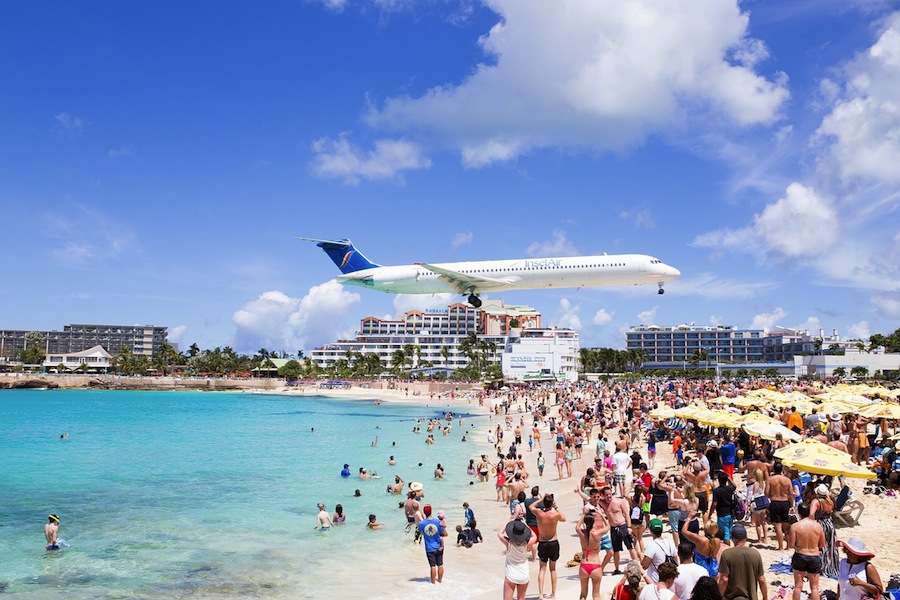
The Dutch side of St Martin (aka Sint Maarten) offers a very interesting investor permit (RBI scheme) to foreigners with a path to permanent residence and then to dutch citizenship. Foreigners must invest atleast USD 500,000 in real estate or business investment in the island. The dutch side is heavily populated. The Dutch side is known for its festive nightlife, beaches, jewelry, drinks made with native rum-based guava berry liquors, and casinos. The island’s French side is known for its beaches, clothes, shopping (outdoor markets), and French and Indian Caribbean cuisine. Sint Martin uses the Euro as its currency, while Sint Maarten uses the Netherlands Antillean guilder, pegged at 1.79 per US Dollar. Sint Maarten has attracted many nationalities to it’s shores; many looking for better opportunities. Visitors from the United States, Canada, South America, Europe and the Caribbean who call “home.” The island prides itself on being home to over 100 nationalities.
Princess Juliana International Airport is the main airport on the Caribbean island of Saint Martin.
5. Puerto Rico
Puerto Rico is a Caribbean island and unincorporated U.S. territory with 3.2 million residents. Puerto Ricans have been U.S. citizens since 1917, and can move freely between the island and the mainland.
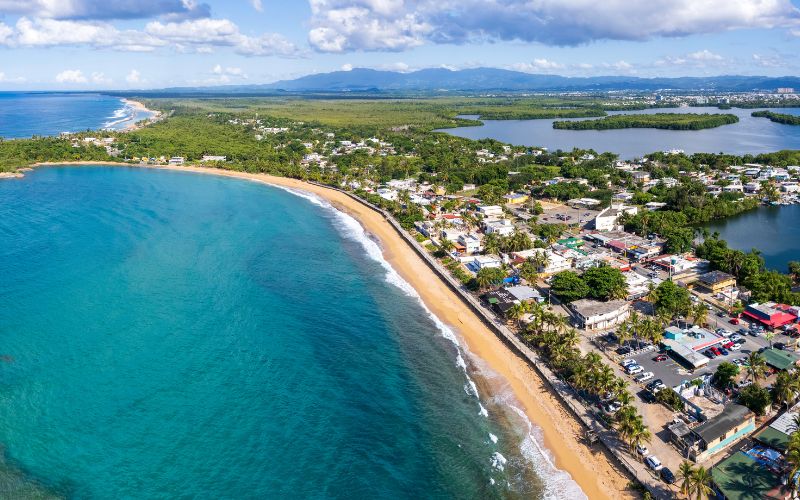
Puerto Rico recently attracted super rich population, seeking luxury homes and generous tax breaks, with most expensive beachfront properties. Puerto Rico has no federal income tax on passive income from investments or rentals, is the key for attracting high net worth individuals to this tropical paradise. Further lures mainlanders with only 4% income tax.
6. Bahamas
The Bahamas is also of the richest countries in the Americas after United States and Canada, with an economy based on tourism and finance. Bahamas consists of more than 700 islands, cays, and islets in the Atlantic Ocean, and is located north of Cuba with a population of 400,000 and GDP $12bn
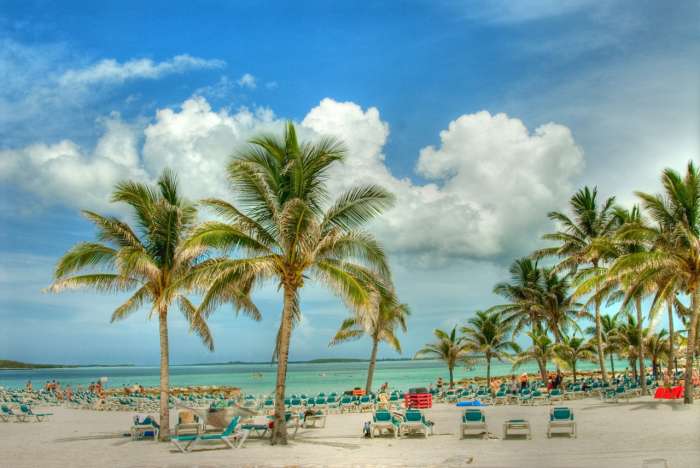
Bahamas is home to offshore and crypto companies due to attractive tax regime. The most important economic sector is banking and offshore international financial services adding to 15% of GDP. No income tax, corporate tax, capital gains tax, or wealth tax.
7. Aruba
Aruba is a constituent country within the Kingdom of the Netherlands, situated in the south of the Caribbean Sea. Tourism, oil refining and offshore companies and banking are key sectors. property transfer is taxed at 3% of the value of the property valued below $140,000. Aruba is top destination for wealthy, with luxury condos and villas, fine restaurants, high street shopping, night clubs etc.
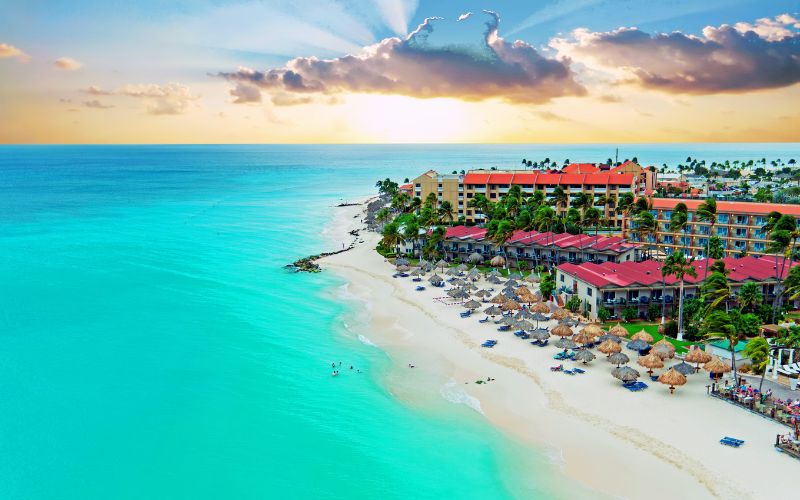
Aruba shares Dutch nationality with its citizens. Interest received from deposits at qualifying institutions (i.e. institutions in Aruba or abroad which are subject to supervision) are exempt from individual income tax. The aviation registry is a lucrative source of income for Aruba. It includes the registration of many aircrafts belonging to wealthy people.
8. Turks & Caicos Islands
Turks and Caicos islands is a British overseas territory (BOT) with a population of 23,000
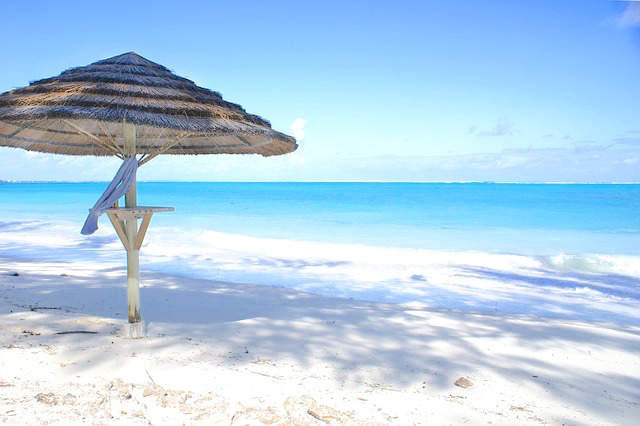
The country is primarily dependant on tourism and a major offshore financial centre with US dollar used as primary currency. The Turks and Caicos Islands participate in the Caribbean Development Bank, is an associate in CARICOM, member of the Universal Postal Union and maintains an Interpol sub-bureau. Defence is the responsibility of the United Kingdom. In 2002, the British Overseas Territories Act restored full British citizenship status to all citizens of British Overseas Territories, including the Turks and Caicos.
9. Barbados
Barbados is an island country in the Lesser Antilles of the West Indies, in the Caribbean region of North America with a population of close to 300,000 and GDP of $5.3 billion.
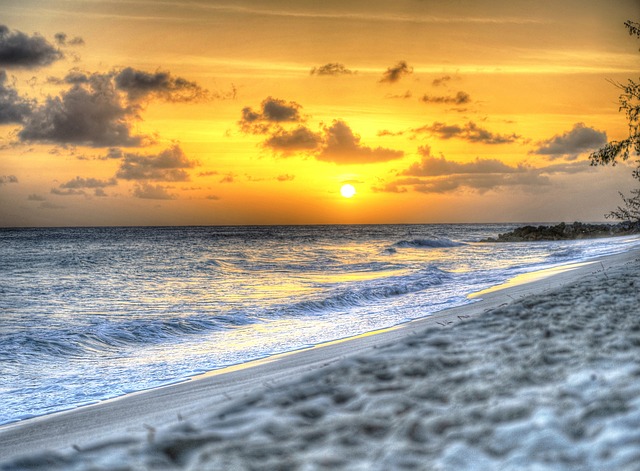
Despite being classified as an Atlantic island, Barbados is considered to be a part of the Caribbean, where it is ranked as a leading tourist destination. Barbados is a mixed economy Barbados maintains the third largest stock exchange in the Caribbean region. 40% of the tourists come from the UK, with the US and Canada making up the next large groups of visitors to the island. Barbados is a full and participating member of the Caribbean Community (CARICOM), CARICOM Single Market and Economy (CSME), and the Association of Caribbean States (ACS). Organization of American States (OAS), Commonwealth of Nations, and the Caribbean Court of Justice (CCJ).
10. St Kitts & Nevis
Saint Kitts was home to the first British and French colonies in the Caribbean, and thus has also been titled “The Mother Colony of the West Indies”. St Kitts and Nevis is the smallest sovereign state in the Western Hemisphere, in both area (261 km2) and population (55,000).

Saint Kitts and Nevis is a full and participating member of the CARICOM, OECS and OAS. St Kitts depends on tourism, agriculture, and light manufacturing industries after the collapse of the sugarcane industry. St Kitts & Nevis also acquires foreign direct investment from their citizenship by investment programme, outlined in their Citizenship Act of 1984. Saint Kitts and Nevis were among the first islands in the Caribbean to be settled by Europeans.
GDP per Capita Income (USD)
| Caribbean | GDP per capita (PPP) in USD – 2023 |
| Cayman Islands | 96,073 |
| US Virgin Islands | 41,976 |
| British Virgin Islands (BVI) | 40,451 |
| Puerto Rico (US) | 35,208 |
| Bahamas | 34,749 |
| Aruba | 33,300 |
| Turks and Caicos | 30,438 |
| Sint Maarten (Dutch) | 39,432 |
| St Kitts and Nevis | 22,553 |
| Barbados | 22,672 |
| Trinidad & Tobago | 18,333 |
| Panama | 18,661 |
| Antigua & Barbuda | 21,560 |
| Costa Rica | 16,595 |
| Grenada | 10,463 |
| Saint Lucia | 13,980 |
| St Vincent and Grenadines | 10,279 |
| Dominican Republic | 10,716 |
| Dominica | 8,953 |
| Jamaica | 6,874 |
| Belize | 7,987 |
| Guyana | 20,626 |

